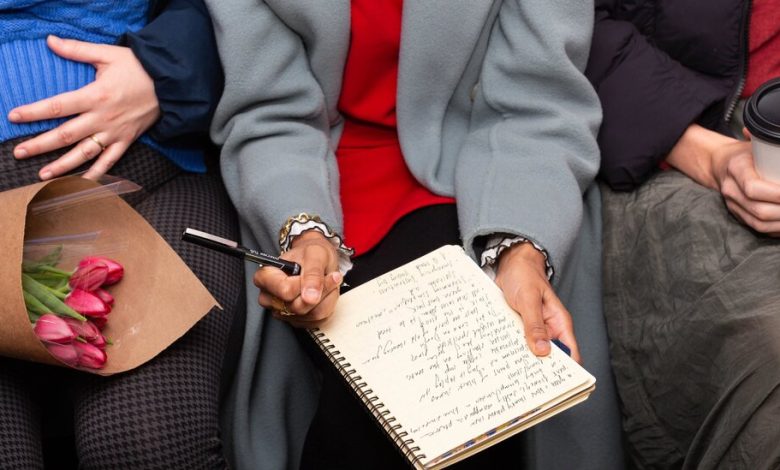Stop Ignoring All the Mundane Miracles in Your Life

After a long day at work, I absent-mindedly boarded an express train. What should’ve been an 18-minute commute home turned into a 50-minute journey from Manhattan to Brooklyn and back. Sitting on that last train to my apartment, I felt a digital dreariness overcome me. I’d spent all day responding to emails, Slacks and DMs. I just wanted to not look at a screen. I didn’t have a book with me, so I took out my notebook and jotted down everything I saw, heard or smelled: A backpack occupying a seat for a human. A woman wearing a spiky hat. Shoelaces, untied. Shoelaces, tied. An aggressively yellow ad for something called Mullvad. “Do Not Lean on Door.” Snoring. The person next to me typing out in a text, “Dinner next week?” before quickly deleting it and locking his phone.
“I don’t have any Seine River like Monet, I’ve just got U.S. 66 between Oklahoma and Los Angeles,” the painter Ed Ruscha once said. Ruscha — who painted gas stations, apartment buildings and the 20th Century Fox logo, among other iconic images of postwar American life — turned the monotonous into monuments. New York, filled with wonder and excitement, is also ridden with sights that ubiquity has made boring: ads for bags most of us can’t afford, hordes of people wearing the same faux-leather jacket and high-waisted jeans they saw an influencer wearing on Instagram and trash — lots of trash. I thought that paying attention to these ostensibly negligible aspects of the world, as Ruscha did, would open something up, help me better understand our present or be more OK with the fact that much of life is filled with mundanity.
Since that train ride, I’ve made a habit of “observation journaling” — recording everything my eye notices, including the people, sounds, smells, noises and screens. Sometimes I go out with the sole purpose of logging my surroundings, setting a timer for 15 minutes while sitting at a coffee shop, bar or other public accommodation. When I find myself impatiently waiting for something with nothing better to do, I start writing things down, taking note of everything there is to possibly take note of, until my food or train station or whatever it is invariably arrives. By now, I’ve filled almost an entire notebook with these perusals.
Some places offer the same sights ad nauseam — you’ll almost always see a bored dad or boyfriend with glazed-over eyes at the waiting area in the Glossier store in SoHo, a National Geographic magazine from the early 2010s in a doctor’s office waiting room or a forgotten but well-loved stuffed animal lying on the ground in the park. Encountering these scenes over and over, I started to think more deeply about the sights we’ve taken for granted, the things that slip the attention of social media’s endless cataloging. These details came to feel like the intimations of the lives that people live around us. Who was the child who left that stuffed animal there? Are they mourning it, or have they forgotten all about it?
I did not invent this practice. In the book “An Attempt at Exhausting a Place in Paris,” the French filmmaker and writer Georges Perec chronicles everything unimportant that he observed over the course of three days on Place Saint Sulpice in Paris. In his introduction, Perec writes that much of the built environment there — including the church, fountain and police station — have already been “described, inventoried, photographed, talked about or registered.” His intention, rather, is to describe “that which is generally not taken note of, that which is not noticed, that which has no importance: what happens when nothing happens other than the weather, people cars, and clouds.”
We are having trouble retrieving the article content.
Please enable JavaScript in your browser settings.
Thank you for your patience while we verify access. If you are in Reader mode please exit and log into your Times account, or subscribe for all of The Times.
Thank you for your patience while we verify access.
Already a subscriber? Log in.
Want all of The Times? Subscribe.




